edward mallandaine + louisa townsend
Ten years after the death of his first wife, Mary Ann Boyles, Edward married a second time to Louisa Townsend at St John’s Anglican Church in Victoria. Louisa Townsend was born in London on 24 September 1831 and baptised at St James, Westminster on 6 December, the daughter of Thomas Henry Townsend and Harriet Willis. Louisa and her sister Charlotte emigrated to Victoria in 1862 on board the Tynemouth.
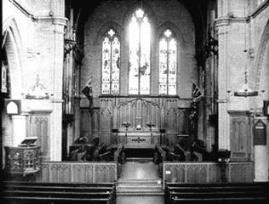
Edward and Louisa decided on a quiet wedding and only announced their intention to marry only one day before the ceremony. Louisa’s sister Charlotte was opposed to the simple wedding and although Edward and Louisa would not be swayed, Edward later recorded his regrets at the decision:
My native modesty shall I say guided me wrong this time, for by my action I deprived my wife no doubt, many valuable gifts which on these auspicious occasions the bride is accustomed to receive. With her numerous friends it was no doubt a considerable loss, though with her usual unvarying good nature she has never alluded to it.
On 1 September 1866, Louisa and Edward walked to the church of St John the Divine on Quadra Street and for the ceremony, Louisa wore ‘a dainty muslin dress, a large white hat with enormous white plumes on the side, and over all a beautiful white alpaca coat’. They were quietly married at 8 o’clock in the morning with only her sister, brother-in-law and one other witness, Charles Redfern, in attendance. Charles had also travelled to Victoria aboard the Tynemouth and later went on to have a successful career as a jeweler and watch maker as well as a political career as mayor of Victoria. After their marriage, Edward and Louisa moved into a rented house on View Street and Edward continued to pursue his career as an architect but maintained his position as a government agent and tax collector to pay the bills.
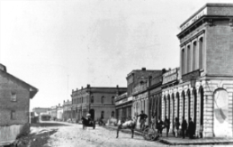
Their first son, Edward, was born on 1 June 1867 and baptised on 23 June at St John the Divine in Victoria. Their second son, Frederick, arrived one year later and was baptised on 20 September 1868 also at St John’s. Not long after Fred’s birth, Edward, Louisa and their two young sons moved to a house on Rae Street where they lived for the next three years. Edward worked out of an office on Government Street and divided his time between drawing speculative architectural plans and collecting taxes. Their daughter Louisa was born on 21 December 1869 and baptised the following March at St John’s.
There were more architects in Victoria than there were potential projects and despite submitting numerous plans and proposals, Edward received few commissions. He accepted an additional post as a School Tax Collector before moving on to a more lucrative position on a Canadian Pacific Railway survey in September 1871. The team was contracted to complete a survey from Hope to Lytton and the assignment would take them three months to complete. Edward was still working on the survey when his fourth child, Harriet, was born on 14 October 1871 and baptised the same day at Christ Church Cathedral.
Edward arrived back in Victoria on 16 December and continued to work on plotting the survey results until the following March when the team was disbanded. He rented an office on the ground floor of an old house at Government and Broughton and his brother–in-law, Thomas Westgarth, rented the top floor. Edward worked on several projects including a church in Metchosin, wooden school buildings in Cedar Hill, Comox and Sooke and the repairs to the Female Infirmary but he still relied on additional work as a private tutor, book keeper and surveyor to supplement the family income. According to Edward’s reminiscences, 1874 was a more prosperous year for him and his family as he decided to publish another City Directory and earned $200 from its publication. He was also appointed Military Paymaster on the recommendation of his friend Captain Roscoe and obtained a temporary position as an Assistant Draughtsman in the local Land Office.
Their fifth and final child, Charles, was born on 20 May 1875 and baptised at the new Christ Church Cathedral on 11 July. But Edward’s financial success was short lived and less than three months after his son’s birth, he was forced to leave his wife and family to seek work elsewhere. He worked briefly in Alaska before setting off for San Francisco hoping a larger city would present more opportunities for an architect. The family was living on Fisgard Street at the time and Louisa’s sister Charlotte and her family lived opposite. Edward’s sister, Caroline, had emigrated to Victoria in 1861 and married Thomas Westgarth the following year. Although Louisa had the support of family nearby, Edward’s continued absences were difficult for her and left her with the responsibility of caring for five young children and as Edward noted in his reminiscences, ‘it must have looked to my dear wife, somewhat like a desertion.’
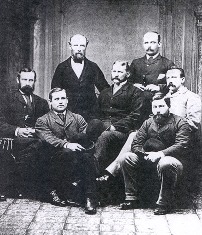
Neither trip proved successful and when the opportunity of a second CPR Survey presented itself in 1877, Edward left his family again — this time for six months. It was on this second survey that Edward spent much of his free time sketching the Fraser River Canyon and many of these drawings are preserved at the BC Archives in Victoria. After the survey, Edward returned to Victoria and what he called ‘the dullness of routine.’
He entered into a partnership with a local builder, John McDowell, in the hope that this would lead to more architectural work but the partnership did not prove as fruitful as Edward hoped and it was dissolved one year later. The family was under additional financial pressure when Edward lost his position as Paymaster for Military District 11 but despite the setback, Edward decided to purchase a building lot and build a family home.
In June 1880, he cashed in his life insurance policy and bought a plot of land in James Bay but in order to finance the construction, Louisa raffled off her diamond necklace and raised another $350. Their friend, W. McKeon, managed the raffle at his hotel, the Oriental, but Louisa took an active role as well: ‘My dear wife undertook and with customary pluck – did the whole of the canvassing!’ By November of that year, the nine room house was complete and the family moved in to their new home at 19 Simcoe Street.
The following year Edward left his family again and joined his final CPR Survey party. But his return to Victoria was not a happy one, at least professionally, as he notes in his Reminiscences: ‘I returned to Victoria; and for another two or three months pursued the even tenour of my weary way.’ His frustration did not pass and after feeling ‘disgusted & tired of the luckless routine’, he sought out a visiting architect from Portland and applied for a position as his assistant. He was accepted by Mr. Sherwin and travelled to Portland to take up the offer of employment and although his position with Mr. Sherwin did not last long, Edward was able to obtain a position as a draughtsman with the Northern Pacific Railway. Five months later, he travelled to Victoria for a brief family visit and on his return to Portland, he decided to set up an office and seek his own employment but reality soon set in and Edward opted for a guaranteed salary and a job with the Land Office. His eldest son, Eddy, also joined him and found work as a carpenter and his earnings were also sent home to help support the family. Edward remained in Portland for one year before returning to his family in Victoria.
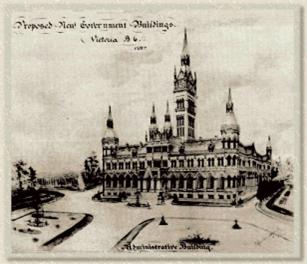
Twenty five years after she left England with her sister, Louisa received word that her mother had died. In her will, Harriet Willis Townsend left Louisa a legacy of £78 and bequeathed a ‘gold bracelet with emerald, large amethyst ring with pearl Hoop, cameo broach and her grandmothers’ old fashioned bracelets’ to her daughter. In 1891, Edward and Louisa celebrated their Silver Wedding Anniversary and after 25 years of supporting her husband in his professional pursuits, raising their children during his long absences and providing for their needs on a limited budget, Louisa deserved a show of appreciation. But once again, Edward’s pride got the better of him:
I repeated the mistake when I ought to have known better 25 years afterwards at our silver wedding anniversary. This time it was pride (Why should I have such pride?) not wishing to have a party in celebration of the event, for fear that all guests duly notified of the occasion of course, might feel it a tax to produce their silver presents: it appeared to me almost like a bid for contributions of such a nature!
The following year, Edward submitted his plans to the competition for the design of the new provincial legislative buildings but success eluded him once again when Francis Rattenbury’s design was chosen ahead of his own. Edward continued to work well into his seventies but complained that other, younger architects were frequently chosen ahead of him.
Tragedy struck the family when their son Fred, aged only 27 years, died while on a duck hunting trip in 1895. Two years later, Edward sat down to write his Reminiscences and recorded much of his life story in great detail. He recounted his early life and childhood memories but focused primarily on his professional life while many family events such as births, marriages and even Fred’s death were not mentioned at all.
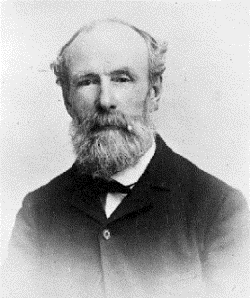
Edward died at the family home on Simcoe Street on 4 April 1905 and was buried next to his son in the family plot at Ross Bay Cemetery. In his will, he left the family home and a rental property at 82 Menzies Street to his ‘ever kind and self denying wife’ Louisa. He also left cash legacies to his children, grandchildren and two sisters in England and his final legacy was provided to complete Fred’s headstone.
Following Edward’s death, Louisa continued to live in the family home along with her youngest son, Charles. In 1919, she suffered an accident and was confined to a wheelchair for the rest of her life. She celebrated her 93rd birthday in September 1924 with a come-and-go tea and guests included her sister Charlotte and granddaughter, Mary Clark, from Vancouver as well as Charles Redfern and Mrs. Stevenson who came out on the Tynemouth with the Townsend sisters.
Louisa lived to celebrate her 94th birthday but her health was failing and she died four days later, on 28 September 1925, and was buried in the family plot at Ross Bay Cemetery. Louisa left the bulk of her estate to her son Charles, ‘as a small token of my remembrance of his loving care in looking after me in my declining years’. She also left legacies to her three other children including her diamond broach and earrings to Louisa, her gold bracelet to Harriet, and several other personal items to her son Edward.
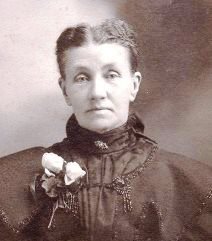
Her son Charles remained in the house and when approached by representatives of the BC Archives, he agreed to sell or donate many family items including his father’s papers and reminiscences and his mother’s piano that she brought out on the Tynemouth. The items remain in the Archives to this day and provide a valuable resource to family members and researchers interested in the early history of British Columbia.
When Charles died in 1940, the family home of over 60 years was sold. In her zeal to clean the house, the new owner cleared out all the old Mallandaine family papers in the attic and burned them in the yard. It is hard to imagine what was lost by this act. The house was still standing in 1964 but was in a derelict state and as a result, it was demolished several years later and replaced by a three story apartment block.